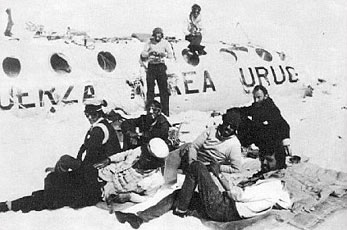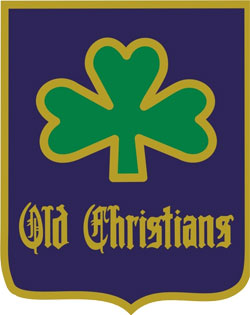|
The
Catholic Emancipation Act of 1829 posed an unexpected
threat to the existence of the Order. The bill proposed to
continue the law of 1791, forbidding religious orders from
recruiting new members, under threat of transportation to
the penal colonies. [7] A delegation to London bearing a
petition signed by thousands of prominent people of
different Christian denominations secured an interview
with the Prime Minister, the Duke of Wellington, the
famously reluctant Irishman.
[8] Edmund Rice’s brother,
Fr. John Rice was a member of the delegation. He explained
clearly the work done by the Brothers in the fields of
education and charity. The Duke replied in a
characteristic fashion:
’You exist
contrary to the law. You may perceive that the people of
this country are hostile to you.’ The law remained, but
Daniel O’Connell, [9] a Catholic lawyer known as The
Liberator in Ireland, advised Edmund Rice to disregard it.
It was O’Connell who famously remarked that he could drive
‘a coach and four’ [10] through any act of parliament.
Nevertheless, its presence created financial difficulties
for the Brothers. They found that they could not affiliate
to the new state-funded multi-denominational National
Schools system that was set up in 1831 as these schools
were strictly secular, (as were the public schools set up
in Uruguay in the 1870s.) In order to survive, the
Brothers introduced a system of fee-paying schools,
whereby the better off subsidised the education of the
poor.
To some
degree this question arose wherever the Brothers opened
schools, as they were to do in many parts of the world.
Stella Maris in Carrasco and Cardenal Newman College in
Buenos Aires are regarded as schools for the more affluent
middle class. Nevertheless the schools have been
consistently involved in social and charitable work in
their communities, following the teaching of their
founder. Cardenal Newman, founded in 1948, was their first
school in South America, followed by schools in Uruguay,
Peru and Paraguay. The influence of the Brothers has waned
in modern times and their numbers have diminished.
‘The
Spirit of the Scrum’
Stella
Maris was to a certain extent an offshoot of the Brothers’
Cardenal Newman School. It had taken quite a few years
for the Brothers in Dublin to accede to repeated requests
from Catholic parents and clergy in Buenos Aires. The
Order was more inclined to concentrate on the
English-speaking countries of the Empire. Nevertheless,
Cardenal Newman School opened in 1948. Some of the
Brothers from the earliest times are still attached to the
college and, in some cases, still active in social work
with elderly and underprivileged fellow parishioners.
A group of
Catholic parents based in Uruguay came to Buenos Aires and
petitioned the Brothers to found a similar school in
Montevideo. They had originally approached a congregation
of Canadian Jesuits, but liked what they saw in Buenos
Aires. From the outset, the Brothers insisted that the
college would be English-speaking and that the education
provided would be Catholic. Moreover, physical education
and sport would play a major role in the life of the
college. Given the perceived aversion of the Brothers to
‘foreign games’ (any sport of British origin) in Ireland,
it is interesting that they chose rugby as the dominant
game at Cardenal Newman and at Stella Maris. Moreover,
Uruguay was still basking in the glory of two wins in the
football World Cup competition: the inaugural World Cup in
1930, which was held at the Estadio Centenario in
Montevideo, and the 1950 World Cup in Brazil. When they
had first arrived ‘rugby was hardly played at all there’
(Reid 1974:21).
The
reasoning behind the choice of rugby was that it
encouraged teamwork rather than the cultivation of
individual stars. At all times boys were taught to play
fair but hard, and to support one another, all striving
together towards a common goal. This spirit of cooperation
permeated all aspects of the life of the school and still
does. This attitude contributed to what has been called
‘the mystery of Christians’. The Brothers, some of them
new to South America and speaking little or no Spanish,
learned from the boys and vice versa.
As the
first generation of graduates left the school, many imbued
with a passion for rugby, they decided to continue
practising the game and in 1965 established ‘Old
Christians’ Rugby Club. Reflecting the Irish link, they
adopted the shamrock as the club’s crest. Within a short
period of time they became a dominant force in Uruguayan
rugby. In 1968 they won their first Uruguayan National
championship, and their second in 1970. They made their
international tour to Argentina in 1970 and the following
year went to Chile, chartering a plane from the Uruguayan
air force.
Such was
the success of the 1971 tour to Chile that it was decided
to do another tour the following year, again chartering a
plane from the air force, recruiting friends and relatives
to help fill the plane. On 13 October 1972 the flight
(F-227), which flew via Mendoza in Argentina, crashed in
the snow-covered peaks of the Andes on its way to Santiago
de Chile. The survivors initially survived with scarce
food reserves salvaged from the plane, but once these
supplies ran out, they were forced to feed themselves on
the bodies of their dead companions (Reid 1974) and (Parrado
2006).
Initially
the young men turned to their team captain for leadership.
They attributed their survival to a great extent to the
attitudes and discipline inculcated in them by the
Brothers, and to their involvement in rugby. They invoked
the ‘Spirit of the Scrum’. They prayed together as they
had at school and sang their school chants and songs.
Nando
Parrado and Roberto Canessa undertook a ten-day expedition
of incredible risk and hardship over the Andes, securing
the rescue of their fourteen surviving companions,
[11]
after seventy-two days in the mountains. On returning to
Montevideo, the survivors consulted Brother John McGuinness, the director of the college, as to how they
should deal with the frenzy of media attention. His simple
answer was ‘Tell them the truth’.
|

Survivors of the Andes air crash
(Viven) |
This most
extraordinary of ‘rugby stories’ focused world attention
on Uruguay and on Stella Maris and defines to this day the
spirit of the school. Fittingly, thirty years later, a
selection including a dozen of the survivors played the
match originally intended for 1972, which they won by
twenty-eight points to eleven. Roberto Canessa, one of the
try scorers, remarked: ‘We were really up for the game. We
were focused, just like thirty years ago.’ Most of the
survivors are still closely involved with the school and
with the Old Christians club. Many of them are
distinguished members of the professions and commercial
life in Uruguay. Nando Parrado is prominent in the media
and in business. Roberto Canessa is Uruguay’s leading
paediatric cardiologist and in 1978 he was picked to play
on the South American rugby XV, named the Jaguars.
Although
the Brothers had an influential role in Uruguayan rugby,
establishing the foundations for one of the country’s most
successful clubs and the diffusion of the sport in the
country, their contribution to Argentinean rugby was on a
smaller scale, as the game was well established by the
time Cardenal Newman College was founded. Nevertheless
they still made a significant contribution to Argentinean
rugby. Club Newman was founded in Benavides, Buenos Aires
in 1975, by graduates of the school, and the Club competes
in the first division of the Rugby Union of Buenos Aires (URBA)
championship. ‘Pumas’ (Argentinean national rugby team)
players who got their start in Club Newman include the
Contepomi brothers, Felipe and Manuel, and Marcos Ayerza. |



